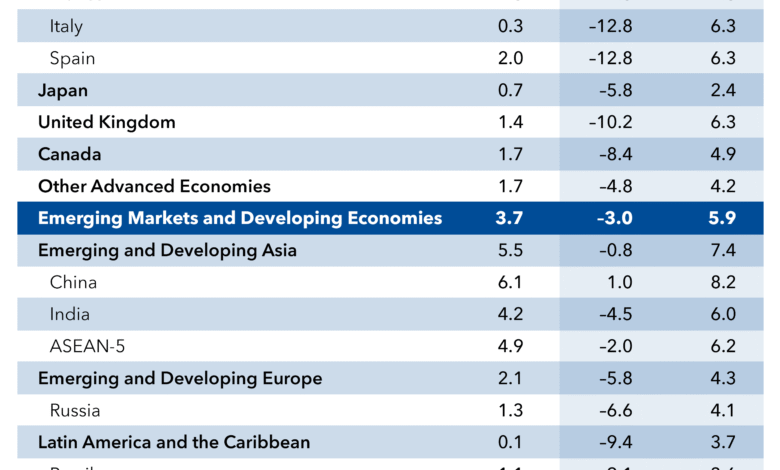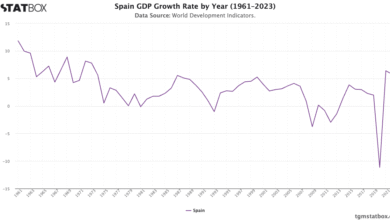Economic Report: Fed Beige Book Cites Slow Growth and Inflation

The latest economic report from the Federal Reserve, commonly referred to as the Fed Beige Book, highlights concerning trends within the U.S. economy, encompassing declining growth and rising inflation. This extensive overview reveals that hiring rates are stagnating, leaving many in the job market apprehensive about future employment opportunities. Business owners and consumers alike are expressing rising fears regarding tariff impacts, which are contributing to increased prices across various sectors. Regional disparities peek through the report, with cities like Boston and New York showing negative economic activity while others like Richmond and Chicago experience slight growth. As we delve deeper into the intricacies of this economic report, it becomes crucial to analyze its implications and the underlying factors contributing to these shifts in the economic landscape.
In a recent assessment of the economic climate, the Federal Reserve shared its Beige Book insights, shedding light on the current conditions affecting the nation’s financial health. The findings indicate a contraction in economic activity, driven by sluggish hiring and apprehension regarding price surges resulting from tariffs. These developments reflect a broader concern about inflation and its potential impact on various industries. Additionally, the report underscores regional variations in economic performance, highlighting that while some districts show promise, others face significant challenges. Understanding these dynamics is essential for grasping the overall trajectory of the U.S. economy in these uncertain times.
Overview of the Fed Beige Book Economic Report
The Fed Beige Book serves as a critical barometer of the economic conditions across the United States, aggregating insights and data from each of the Federal Reserve’s twelve districts. In the latest report, released on June 4, 2025, notable concerns surrounding declining economic growth were highlighted. Businesses have expressed worries about the ongoing slow hiring trends and the impact of rising inflation on consumer spending. The report underscores that the overall sentiment among business owners is one of caution, as uncertainty looms over policy changes and tariff implications.
Analysis from the Fed Beige Book indicates that economic activity has shown a slight decline compared to the previous months, indicating a significant shift in momentum. With consumers perplexed by rising prices and businesses hesitant to expand amidst tariffs, regions like Boston, New York, and Philadelphia reported diminished growth. This reflective snapshot of the U.S. economy serves as an essential guide for policymakers and stakeholders, embodying the challenges posed by current fiscal conditions and inflationary pressures.
Impact of Rising Inflation on the Job Market
Rising inflation has far-reaching effects on the U.S. job market, as noted in the recent Fed Beige Book economic report. This inflation creates a complex environment where businesses find it harder to maintain consistent hiring practices. The report illustrated that labor demand has been lower, with many sectors reporting layoffs and hiring freezes. Employers are reluctant to increase staffing levels due to uncertainties related to economic conditions and the fluctuating costs of goods and services, driven largely by tariffs.
The employment landscape continues to be dynamic, with a reported increase in job applications but stagnant job creation. Many corporations are adapting by re-evaluating their workforce needs amidst worries regarding sustained inflation, necessitating strategic hiring approaches. Organizations may consider adjusting their approaches to labor costs and operational expenses by either temporarily reducing profit margins or implementing new fees to counterbalance the inflationary impacts.
Regional Disparities in Economic Activity
The Fed Beige Book’s findings reveal significant regional disparities in economic activity across the U.S. For instance, while districts like Richmond, Atlanta, and Chicago reported better growth, areas such as Boston, New York, and Philadelphia faced stagnation and decline. This juxtaposition reflects the varied impacts tariffs and inflationary pressures have had on different local economies, which can affect job availability and consumer spending capabilities.
Regions hit hardest by these economic downturns often exhibit caution among businesses, leading to a more conservative approach to hiring and investment. Companies in these slower-growing regions may find themselves navigating a landscape filled with challenges, including navigating increased costs due to tariffs while trying to simultaneously stimulate consumer demand amid rising prices.
The Role of Tariffs in Economic Decisions
Tariffs have emerged as a crucial topic within the Fed Beige Book economic report, influencing various sectors of the U.S. economy. With tariffs affecting the prices of imported goods, businesses are feeling the pressure to adjust their pricing strategies. The report indicated that higher tariff rates are exerting upward pressure on costs, contributing to the general sentiment of rising inflation. This ongoing situation compels companies to possibly pass these costs down to consumers, creating further uncertainty.
Many firms have voiced their intentions to adjust their operations in response to tariff-induced cost increases. As tariffs were referenced 122 times in the latest report, it highlights their pervasive influence on decision-making. Business owners are now weighing the benefits of absorbing costs against the risks of raising prices, leading to a complex balancing act that shapes the overall economic outlook.
Consumer Sentiment Amid Declining Growth
Consumer sentiment plays a pivotal role in shaping economic outcomes, particularly during periods of uncertainty as captured in the Fed Beige Book. As growth declines and inflation rises, consumers tend to become more cautious with their spending. This hesitancy can further exacerbate economic slowdowns, as diminished consumer confidence leads to reduced business revenues and lower hiring rates. The interconnected nature of these factors emphasizes the importance of restoring consumer trust for rejuvenating economic activity.
Reports of increased prices and potential job losses create a feedback loop, where consumers are less willing to spend, which in turn affects business performance. Economists argue that addressing inflation effectively could restore consumer confidence. This requires coordinated approaches from policymakers focused on stabilizing prices while promoting positive economic sentiment among consumers, creating a path forward for renewed growth.
Job Openings and Employment Trends
Despite the noted challenges, the Fed Beige Book indicates a surprising increase in job openings, which amounted to approximately 7.4 million in April. This unexpected growth amidst a broader narrative of stagnation drives home the complexities of labor demand within the evolving U.S. economy. Hiring trends in certain sectors may still reflect optimism, suggesting that while overall hiring might be flat, specific industries continue to seek skilled labor.
However, this increase in job openings must be viewed within the context of overall economic conditions. As firms navigate rising inflation and tariffs, the breadth of employment opportunities will likely depend on their ability to adapt to these challenges. Employers may need to rethink their engagement strategies and improve working conditions to attract talent in a tightening labor market.
Understanding the Economic Uncertainty Landscape
The landscape of economic uncertainty is perpetuated by various factors, as highlighted by the recent Fed Beige Book. Elevated levels of uncertainty are widespread across all districts, contributing to a cautious approach towards business and household decision-making. This uncertainty is fueled by unpredictable inflationary pressures and concerns surrounding the ramifications of tariff policies, leading to hesitancy in long-term investments.
As companies grapple with the implications of a volatile economic environment, many are delaying substantial commitments, ranging from hiring to capital expenditures. This hesitancy can cascade through the economy, affecting growth outcomes and individual livelihood. Addressing these uncertainties is essential for economic recovery as confidence returns to the marketplace.
Future Outlook on Inflation and Economic Growth
The future outlook for inflation and economic growth remains concerning, with the Fed Beige Book signaling that prices are expected to increase at a significantly faster rate. As businesses brace for these cost increases, the implications for consumer behavior and hiring practices could be profound. Economists suggest that persistent inflation may lead to more aggressive monetary policy adjustment, which could slow down growth further if not managed appropriately.
In this dynamic landscape, businesses and policymakers must collaborate to create measures that can cushion the potential adverse effects of rising prices. This includes exploring avenues to enhance productivity while keeping consumer prices in check. The interplay between inflation rates and growth will be crucial in determining the U.S. economy’s trajectory in the coming months.
Response Strategies for Businesses
In light of the findings and analyses presented in the Fed Beige Book, businesses must formulate strategic responses to tackle the ongoing economic challenges. This includes adjusting pricing models to account for rising costs due to tariffs while seeking innovative ways to maintain customer loyalty without pricing themselves out of the market. By considering options such as value additions or temporary promotions, businesses can keep consumer esteem intact even in tumultuous economic times.
Furthermore, revisiting operational efficiencies may yield significant benefits. Organizations that focus on improving productivity and leveraging technology can potentially offset some of the inflationary pressures on wages and supplies. Cultivating a flexible business model that can adapt to changing economic landscapes will be key for long-term sustainability in a climate marked by uncertainty.
Frequently Asked Questions
What does the Fed Beige Book economic report say about the US economy’s current condition?
The Fed Beige Book economic report indicates that the US economy has contracted over the past six weeks, highlighting a slowdown in hiring and growing concerns among consumers and businesses regarding rising inflation and tariff impacts. It describes economic activity as having declined slightly, with regions like Boston, New York, and Philadelphia reporting downturns.
How is rising inflation affecting the US economy according to the Fed Beige Book?
According to the Fed Beige Book, rising inflation is a significant concern, with prices increasing at a moderate pace. The report notes that many businesses expect costs and prices to rise even faster in the future, attributing some of this inflationary pressure to higher tariff rates, which are impacting overall economic conditions.
What insights does the Fed Beige Book provide on the job market in the US?
The Fed Beige Book provides insights indicating that the US job market is experiencing little change, with seven of the Fed’s 12 districts reporting flat employment. This includes mentions of declining labor demand, hiring pauses, and layoffs in specific sectors, reflecting concerns about future economic growth and job stability.
How are tariff impacts shaping the economic landscape according to the Fed Beige Book?
The Fed Beige Book reports that tariff impacts are creating upward pressure on costs and prices, with elevated levels of economic uncertainty reported across all districts. Businesses are concerned about passing these tariff-related costs onto consumers, which may further exacerbate rising inflation.
What regions are experiencing declining economic activity as per the Fed Beige Book?
The Fed Beige Book highlights that regions such as Boston, New York, and Philadelphia are experiencing declining economic activity, in contrast to other districts like Richmond, Atlanta, and Chicago, where growth has been reported. This disparity indicates varied local economic conditions amid broader national trends.
What are the implications of rising prices for businesses as indicated in the Fed Beige Book?
The Fed Beige Book suggests that rising prices are prompting businesses to consider reducing profit margins or implementing temporary fees or surcharges. Many firms express concerns about the inflationary pressures resulting from tariffs, which may affect pricing strategies and overall economic stability.
How frequently do tariffs appear in the Fed Beige Book, and what does that suggest?
Tariffs were mentioned 122 times in the Fed Beige Book, an increase from 107 mentions in the previous report. This suggests that tariffs are a significant concern for many businesses and are directly influencing economic expectations, inflation rates, and hiring practices across various sectors.
| Key Points |
|---|
| The U.S. economy has contracted over the past six weeks as hiring has slowed and concerns about price hikes from tariffs have grown. |
| Prices are rising at a moderate pace, with expectations for a faster increase in costs and prices going forward. |
| Economic activity has declined in Boston, New York, and Philadelphia, while Richmond, Atlanta, and Chicago report better growth. |
| Hiring remains steady across most districts, with many reporting flat employment and some sectors experiencing layoffs. |
| Higher tariff rates are cited as a primary factor putting upward pressure on costs, affecting inflation expectations significantly. |
| Disparities exist in how businesses plan to cope with rising prices, with some considering reducing profit margins or imposing fees. |
| Concerns remain about economic growth slowing due to tariffs, despite recent hopes for easing tensions. |
Summary
The economic report released by the Federal Reserve highlights critical concerns surrounding the U.S. economy, indicating a contraction marked by slowing hiring and rising concerns over tariff-related price increases. As the report articulates, all major districts reflect heightened economic uncertainty, which has resulted in cautious behavior from both businesses and consumers. Furthermore, with expectations of rising inflation and diverse regional performances, it reflects a complex economic landscape that requires vigilant monitoring as the ramifications of tariff policies continue to unfold.



